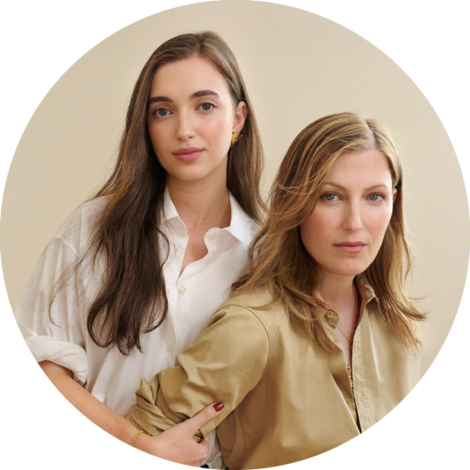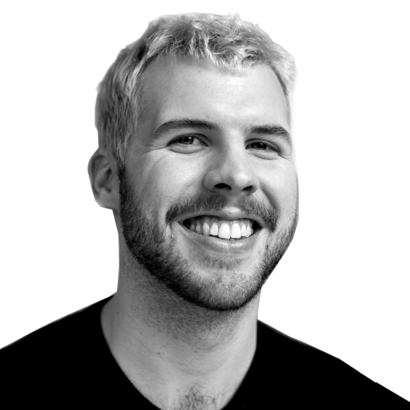I have become fascinated with a particular subway advertisement I see most mornings on my way to work. It’s for a French beauty label called Caudalie and about a collection they have called Vinoperfect, referencing a proprietary ingredient extracted from grapevine sap. The ad has a tagline that I only wish I had written myself: “The Power of the Grape.”
A few times a day, the phrase will pop into my head without warning, so perfect and turgid: The power of the grape.
The power of the grape!
It turns out that the vineyard has provided a fertile starting place for many “active” skin-care products, where “active” means they do something. April Gargiulo used her family’s wine-making expertise to launch her boutique skin-care label, Vintner’s Daughter, and some of the crop from Château de Beaucastel has even been siphoned off to create the active ingredient for Brad Pitt’s line, Beau Domaine. The Sérum costs $242. The power of the grape.
On the other side of France, another château, Yquem, has produced a peculiar variety of grape for the past four centuries. The estate sits upon a network of ravines in the southern hills of Bordeaux near Sauternes, where a humid and breezy micro-climate has made the region’s vineyards unusually susceptible to the fungus botrytis. Wine-makers affectionately call botrytis the “noble rot,” which makes the grapes shriveled and sugary and results in a nectar-sweet white wine—Sauternes—that has been prized for as long as they’ve been making it. Thomas Jefferson was an alleged fan. Last year, Jay-Z spent his 54th birthday sampling wines at Yquem.
It also lends itself to one of the most effective skin treatments in human history, according to LVMH, the company that owns Château d’Yquem, and Parfums Christian Dior, the house that has distilled the power of nobly rotten grapes into a stratospherically high-end skin-care collection.
There are expensive face creams, and then there’s L’Or de Vie, perhaps one of the only contemporary skin-care collections marketed expressly to high-net-worth individuals. A jar of La Crème or a vial of Le Sérum costs $1,700, and a month-long concentrated treatment, produced yearly and released like a bottle of Yquem wine, costs $3,200. The 2023 vintage is made with 24-karat gold and glycolic acid and is currently available for purchase for those who can afford the privilege.
L’Or’s claims are astounding. One month of the serum’s use showed a fourfold increase in skin firmness, density, and smoothness, and wrinkles treated with L’Or de Vie cream looked diminished in as quickly as an hour, explains Virginie Couturaud, Dior’s scientific-communications director. The line originally launched in 2007, but the brand recently commissioned a battery of studies and biotechnology processes to get more out of Yquem’s grape. Now the source of L’Or’s power comes from something called Golden Drop Longevity Technology, which is made from the sap and ferment of Yquem grapevines.
Owing to its unit price, L’Or de Vie is a substance meted out only under the strictest of circumstances—such as when you are lying supine beneath the Cheval Blanc hotel wearing nothing but Christian Dior Parfums–branded disposable panties. I was able to experience it at a press conference held at Yquem as a guest of Dior and LVMH—How else was I going to?—alongside a gaggle of other reporters from the U.S. and Europe. It was a hot July day, but cool breezes swept the grounds at regular intervals. After opening remarks, the Stanford professor David Furman took the podium. “What if I told you that reversing time is no longer a dream?” he began.
Furman is a Dior collaborator, and a longer-time researcher on aging, though his fussed hair and black boots make him look like more of a Beat poet. At Stanford, he directs the 1000 Immunomes Project, and part of his study has involved charting the unseen mechanisms by which our bodies age. There are 12 “hallmarks” that can be targeted to reverse biological age, Furman said; L’Or de Vie addresses seven of them.
The tides have changed for the anti-aging industry. For one, that term has fallen out of favor even as the category it describes has been growing more or less steadily for the past century or so. Lately, the term “longevity” has superseded “anti-aging” in discussions about the time-honored tradition of looking younger, or better for longer. The vanguard of fine skin care is focusing on delaying the cellular expiration dates that are hard-coded into our DNA.
After the presentation, we joined Furman in a shady spot on the grounds with Couturaud and Bruno Bavouzet, the president of LVMH Recherche, for the Q&A portion of the tour. The executives were dressed smartly in navy Dior suits, and behind them, green vineyards rolled. We leaned in close to hear them over the bleating of cicadas.
I asked Bavouzet about the power of the grape—What is it? He said it’s polyphenols, mostly. A typical serum made with grapes might include resveratrol, a popular ingredient and antioxidant. L’Or de Vie’s Golden Grape Longevity Technology includes 10 different polyphenols. An internal study claimed that this compound could reduce up to 92 percent of oxidative stress—in other words, keep skin almost completely guarded from the degenerative effects of pollution or ultraviolet radiation.
The grapes from Yquem may be more lush than grapes from other regions, but they’ve also been enhanced and refined by a 17-step process that is described only as rigorous and expensive. “That’s how we get those super results,” he said. “It’s a kind of luxury because at the end, it’s just one line. We don’t put these ingredients anywhere else.”
Couturaud notes the inclusion of three “longevity” molecules: NAD+, Sirtuins, and SOD. “I think it is very relevant and very huge to have these three in one formula,” she added. Most competitors use only one.
Last year, Dior formed the Reverse Aging Board, which works on product development and conducts parallel research. Furman is a member. “We’re working on a very similar mission, and our vision is actually pretty aligned,” he said. The board is also in the early stages of using spatial recognition from a photograph to determine a person’s biological age. “It’s a little bit sci-fi, but we do have the data,” Furman said. He calls it the “Healthy Selfie.”
Furman’s promise of youth everlasting is couched in decades of research, but it also alludes to a fascination with aging reversal that is both timeless and highly of the moment. Death Becomes Her opens on Broadway this month, with Michelle Williams, of Destiny’s Child, offering Megan Hilty a vial of rejuvenation potion. Earlier this fall, Demi Moore delivered a shocking performance in the movie The Substance, whose title refers to an elixir that causes one to spawn a younger version of themself.
A topical cream that can theoretically extend the lifespan of a skin cell. Is there anything more precious than that? Dior answered this hypothetical with one final flourish: a series of five glass sculptures forged by the artist Aristide Najean in his Murano studio and inspired by the Yquem “Golden Grape.” The objets are sprinkled across the world’s Dior boutiques, but one was displayed in a room at Yquem, and we observed it cautiously and awfully. The total scarcity, the absolute fragile material, the specter of one of the wealthiest and most powerful luxury brands in the modern world … The point was well taken.
Brennan Kilbane is a New York–based writer and the beauty editor at The Business of Fashion. He is originally from Cleveland, and his interviews and essays have appeared in Allure, GQ, and New York magazine





